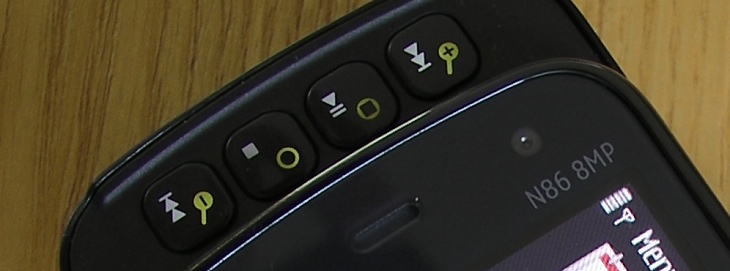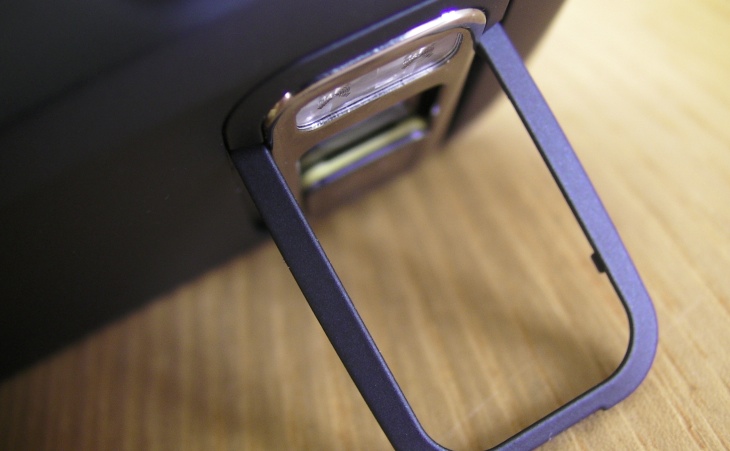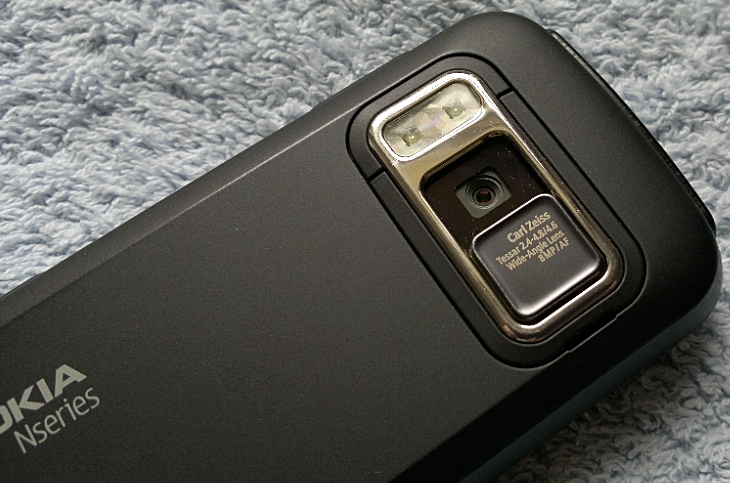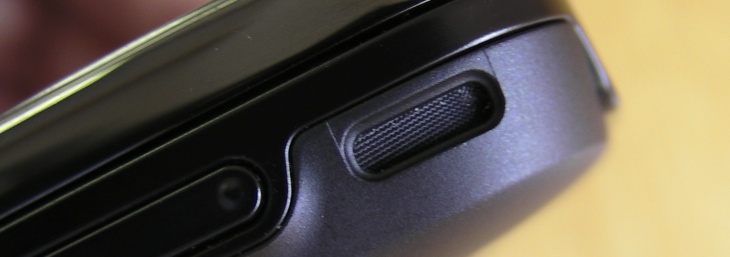Smartphones moving forwards
Before heading into the main table, below, I should add that I'm not altogether blind. For all the ways in which the device tech below is still interesting, relevant and (sometimes) still leading, there are other ways in which today's 'smartphones' have swept ahead, in terms of screen real estate, text input, applications and cloud compatibility. I've even commented a number of times on the very definition of 'smartphone', pointing out that the word's meaning has completely changed in the last three years, post-iPhone:
- Defining the Smartphone - part 1
- Defining the Smartphone - part 2
- When is a smartphone not a smartphone? When it's a converged device!
- The Smartphone's place in the mobile spectrum
Plenty of reading for you there, then! Take a modern 'superphone' like the Nokia Lumia 800 or Samsung Galaxy S II and there are many functions for which they run rings round S60 'converged devices'. But the tech advantage isn't necessarily all one way, as we'll see...
![]()
The Last Classic S60 Smartphone
To illustrate some of these aspects, I've taken what I consider the 'Last Classic S60 smartphone', the Nokia N86, from 2009. No touchscreen pretensions, T9-style keypad input, dual slide form factor. You'll remember that in my 'Pimping the N86' piece a few months ago, I started off with a fairly long, and somewhat passionately compiled, list of attributes? This is my starting point for considering 'Classic S60 tech' and seeing how much of it has made it through to 2011 and 2012.
You know me by now - I like to add interest to my tables on AAS. So I'll use this: ![]() for technology which has been carried on or moved forwards, and this:
for technology which has been carried on or moved forwards, and this: ![]() for tech which has moved backwards or been forgotten...
for tech which has moved backwards or been forgotten...
| Nokia N86 'tech' | Today's smartphone top-tier, running into 2012 ... | Progress? |
| Metal chassis, metal mechanism, metal buttons | Some examples of metal in use in some smartphones today, the unibody HTC Radar/Legend and most of the Motorola Milestone/Droid smartphones spring to mind, but the majority of designs use plastic in various forms. The jury's out on whether this is a good thing or not - in terms of cost, impact protection and RF performance - but there's something subjectively reassuring about a phone that's mainly metal. | |
| Keylock toggle switch, i.e. one flick and the screen is locked - or unlocked | Most of the Symbian^3 and S60 5th Edition phones also have (or had) a keylock toggle, but newer devices and those on other platforms have a more laborious mechanism - usually involving a keypress and then a touchscreen swipe. | |
| Separate multimedia controls (on the dual slide), for pause/fwd/rwd of music, videos and podcasts (also found on the N95/N96/N85 etc, of course) | Very few modern smartphones have physical media controls - some Blackberrys have media controls on their top edge. Most phones now rely on shortcuts to music playback on a notifications pane or homescreen. However, being able to control media with one press, without even looking, whichever application is in the foreground, is still a luxury that brings a smile to my face. | |
 |
||
| Digital compass (for aligning a displayed map to your current heading) | Thankfully, what was an extra on the N86 is now standard on all mid-tier to top end smartphones. Accelerometers, GPS and digital compass are all now part of standard smartphone chipsets. | |
| 'Tempered' glass front | The smartphones of today have gone further, with full-on 'Gorilla Glass' and other mineral-strengthened variants - the iPhone 4 and 4S remain the most vulnerable and most easily damaged by dropping. | |
| Kickstand, for propping the phone up for video watching and general easy display | Very few smartphones have a kickstand these days - a couple of HTC models (including the HD7) have a foldout mechanism, plus some devices (e.g. the E7) have hinged keyboards that alleviate the need for a kickstand, but the vast majority of touchscreen slabs have to be propped up precariously against nearby household objects. | |
 |
||
| Digital (MEMS) microphone - astonishing audio quality for voice notes, calls and video soundtrack | Microphone quality has improved slightly in recent smartphones across the board, but quality does vary widely and Nokia's N86/N8/E7/E6 still lead the pack, along with the Apple iPhone, in this regard. | |
| Large camera sensor (1/2.3") | Staggeringly, almost three years after the N86's launch, only one phone - the N8 - has a larger camera sensor (1/1.83"). Most other top-end camera-toting smartphones make do with a 1/3.2" sensor, albeit improved in sensitivity and with the recent introduction of innovations like Back Side Illumination. The bar is gradually being raised in camera technology, but progress seems relatively slow. | |
| Mechanical shutter inside the camera | Although very few other current phone cameras have mechanical shutters (the N8 does, naturally), the advantages in terms of exposure precision and reduced flare are somewhat marginal, in my experience. And using an electronic shutter does mean that camera bulk can be reduced slightly. | |
| Variable camera aperture. According to light levels, the N86's camera can reduce its aperture to F4.8 or open it to F2.4, ensuring decent low light shots while not getting blown out by bright sunlight | We're now seeing the very latest top-end smartphones coming with F2.2 cameras, for better low light performance and with higher tech sensors and algorithms attempting to take care of sunny conditions. However, in my experience, even the N8 (which has to use a slide-in Neutral Density filter in bright conditions) struggles to match the N86 photographs when the sun is shining. | |
| Mechanical camera glass protection, via a sliding shutter, which also kicks off (or closes) the Camera application. (Also present on the N95/N85/N82 and a few other models, of course) | As I ranted recently, all modern 2011/2012 smartphones have horribly exposed camera glass/plastic, meaning that you have to wipe them with a tissue before every important photo. Of all the points in this feature, this is the one which stands out most. | |
 |
||
| Intelligent digital zoom when zooming during video capture, using the whole sensor all the time (in common with the N8) | Although a Nokia technology at the time (and reused on the N8), I'm seeing output from some of the very top-end competitors (Windows Phones, iPhone, etc) that shows similar results, so intelligent digital zoom seems to be starting to go mainstream. Well done all round. | |
| Focus confirmation - when focussing, the exact spot for which the focussing calculations were done is shown, graphically - so you know when focussing's not quite right, even on a small phone screen | Although I've not seen focus confirmation in this form on any other recent phone, most top-end touchscreen smartphones now allow some form of 'touch-to-focus', meaning that you can tap explicitly on the spot in the viewfinder that you'd like to make the focus subject. Still, great idea from the older phone, plus it also had face detection, something else which is only patchily in modern devices. | |
| Panoramic photo-taking built in, no need for sourcing a third party utility | There are still only a tiny handful of smartphones with a camera which can take panoramic photos 'out of the box' - even the mighty N8 needs application help for this. | |
| OLED screen (pixels light up individually, gorgeous colours) | Screen technology has come a long way, at least at the top end of the smartphone world, with Nokia's CBD technology, with Samsung Super AMOLED, and so on. Most decent top end smartphones now have superior colours and performance in a range of lighting conditions. | |
| Stereo, side-mounted loudspeakers, for clear audio wherever the phone is put down | The lack of stereo, per se, is not that much of a loss, but sadly, the loudspeakers of the majority of modern smartphones (including most Symbian ones) are on the device's back, meaning that the (mono) speaker gets muffled or even muted completely when you lay the phone on a sofa, for example. There are notable exceptions - the iPhones have speakers on their bottom edges, as do the Nokia N9 and Lumia 800. Overall though, an annoying trend. | |
 |
||
| Mass memory plus microSD expansion (in common with most Symbian phones since, of course) | This was an innovation in the Symbian world for the N96/N97/N86 era, but has since moved out well into the mainstream. Rather interestingly, with iPhone and Windows Phone, we're now seeing a new (and somewhat unwelcome) trend for integral mass memory but no card expansion. I still prefer the classic multi-disk set-up for its flexibility. | |
| Universal Plug'n'Play, an early implementation of wireless media sharing (along with the N93/N95 etc) | UPnP has become refined and clarified by the DLNA, so that modern smartphones which do support DLNA can mostly play nicely with home Wi-fi-based media servers. Still, Symbian got there first by a good year or three? | |
| FM transmitter, for sending music and podcasts out through a car sound system (also found on the N85, N97, N8 and C7, mainly) | Now officially called 'Play via Radio', this function is still almost exclusively a Nokia thing and seems to be effectively non-existent in the wider mobile world. Admittedly, in cities, the FM interference gets in the way of pleasant operation, but in open areas and on journeys, it's invaluable if your car doesn't have Bluetooth stereo or a suitable line-in. | |
| Built-in podcasting support, for automatic gathering of podcasts without needing to sync to a desktop (also on most S60 phones of this era, of course) | Nokia Podcasting was dropped after the first generation of S60 5th Edition phones, you have to resort to the third party Podcatcher. The iPhone (finally) also now has built-in podcatching support, while Android requires third party apps and Windows Phone struggles to get close to where S60 was three years ago. | |
*NB. Strictly speaking, I should have also included the very attribute of having an auto-focus camera, rather than EDoF, as on most of today's Symbian devices, but that subject has already been discussed at extreme lengths and I didn't want us to get sidetracked!
As I say, don't get too hung up on the device(s) mentioned here - my point here is to try and make sure that technical advances from our smartphone past don't get lost as we progress ever further towards 'superphone'/'tabletphone' territory.
In summary, there are too many red arrows in the table above for my liking. There's a reason why I keep being drawn back to such an old device as the N86 (and even the N82 and E90, at times) - it's because these phones had functions which I'm still not seeing in most of today's high priced, large screened superphones. Never mind the fact that you have to add heavyweight apps like Gravity to equip them for life in 2011 - they sometimes simply do more (for me, at least).
For every critic that ridicules Nokia for seemingly losing its way in 2009 and 2010 as it struggled with making the transition from keypad to touchscreen, credit should at least be given for some of the technology that Nokia pioneered and, in some cases, has attempted to carry through. And a few other manufacturers might like to take a look at classics like the N86 and get a few ideas of what to improve or add next...
Steve Litchfield, All About Symbian, 30 November 2011
